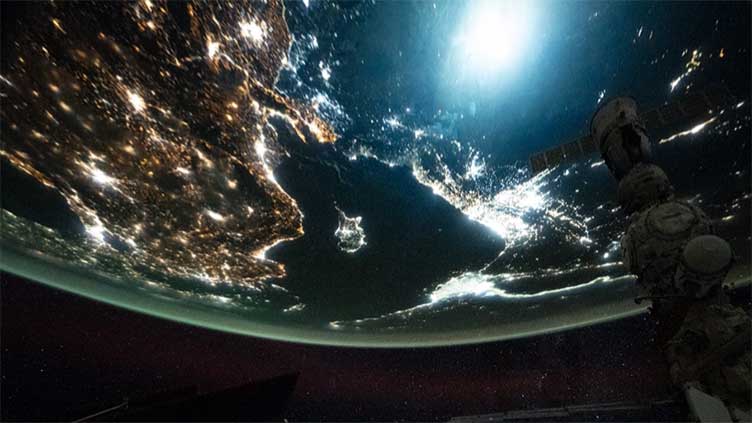Astronaut captures mysterious 'exploding' flash in space

Technology
Bright flash was captured above Earth
(Web Desk) A mysterious bright flash was captured above Earth by an astronaut aboard the International Space Station (ISS).
The footage shows a split-second white and green explosion above the Mediterranean sea, completely dwarfing any nearby lightning strikes.
Nasa astronaut Matthew Dominick, who launched to the orbital outpost in March, sought advice from friends who say the blast was a meteor burning up in Earth's atmosphere.
In a post on social media platform X, Dominick wrote: "I showed this to a couple of friends yesterday to see what they thought.
"They both thought it was a meteor exploding in the atmosphere - a rather bright one called a bolide.
"Timelapse is slowed down to one frame per second for you to see it streaking and then exploding."
Dominick had set up a timelapse on his camera over Northern Africa, which was very dark and experiencing lightning storms at the time.
A bolide, also known as fireballs, is an astronomical term for exceptionally bright meteors that can be seen over a very wide area.
"I think it is interesting to compare the size of the bolide blast to other objects in view like the Mediterranean, Cairo, or lightning strikes," added Dominick.
Jeffrey Smith, a data scientist at the SETI Institute and the principal investigator on the Asteroid Threat Assessment Project at Nasa, noted that only "a couple" bolides are spotted every year.
“Bolides are rare," he continued. "And due to the limited observational areas of ground-based systems, very few bolides are detected from the ground."
Smith added: “Bolide explosions are also very quick, typically lasting just a fraction of a second, so very fast detectors are needed.”
The meteor, captured on 2 September, was seen "streaking and then exploding" over the Nile river in Dominick's slowed-down timelapse.
Commentators on X were in awe, and space expert Gordon Osinski and astrophotographer Andrew McCarthy chimed in to agree the blast was caused by a large meteor.
However, some onlookers looked at the display through a more critical lens.
"Definitely something reentering the atmosphere," one person wrote.
"First time I've seen it happen in video from above rather than below."
The chances of the blast coming from a top-secret space plane, a classified rocket payload or even aliens are slim.
The fireball also appears similar to the much smaller, but equally as green meteor that flew over a girl's head in Portugal in May, and another that blazed over several cities in Turkey in July.


